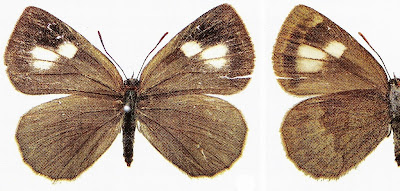2012 Annual Meeting
On December 15, we had the annual meeting at the University of Tokyo. Same as the last time, we had plenty of presentations so it started from the morning time.
This year Dr. KATO Yoshiomi (
Emeritus professor of International
Christian University) won HAYASHI Prize. He made a special presentation titled "
My life to unravel the mystery of butterflies: How was
Japanese population of “Eurema hecabe”
diveded into two good species?"
Dr. KATO (left) and Mr. Uémura, President of BSJ(right)
In the afternoon, the presentations on Zephyrus Hairstreaks are carried out by various speakers. This featured topic contains the latest information on this group from Japan, Korea, Taiwan, China, Bhutan and Myanmar. Among them, the final presentation made by Mr. Shizuya Hideo drew much attention. His presentation was on the newly discovered Zephyrus from W. Myanmar. He himself has been studying the butterfly fauna in Myanmar for almost 20 years. He has discovered many new and interesting species so far. Last June he found another striking new species from western Myanmar.
Mr. Shizuya made his presentation on new Zephyrus species from Myanmar
This new species was described as
Burmaozephyrus kothayaungi (gen. et sp. nov.). Definitely the most remarkable discovery in 2012!!
Burmaozephyrus kothayaungi (gen. et sp. nov.)
After the presentation session, the party was held.
We welcomed 150 participants in total, very successful meeting.















